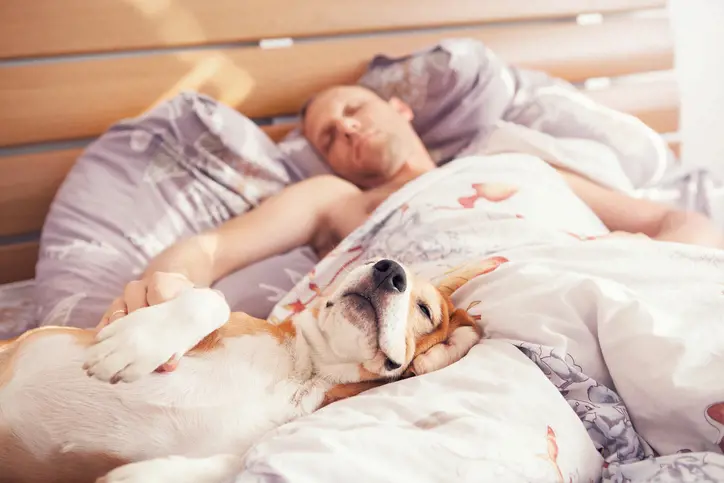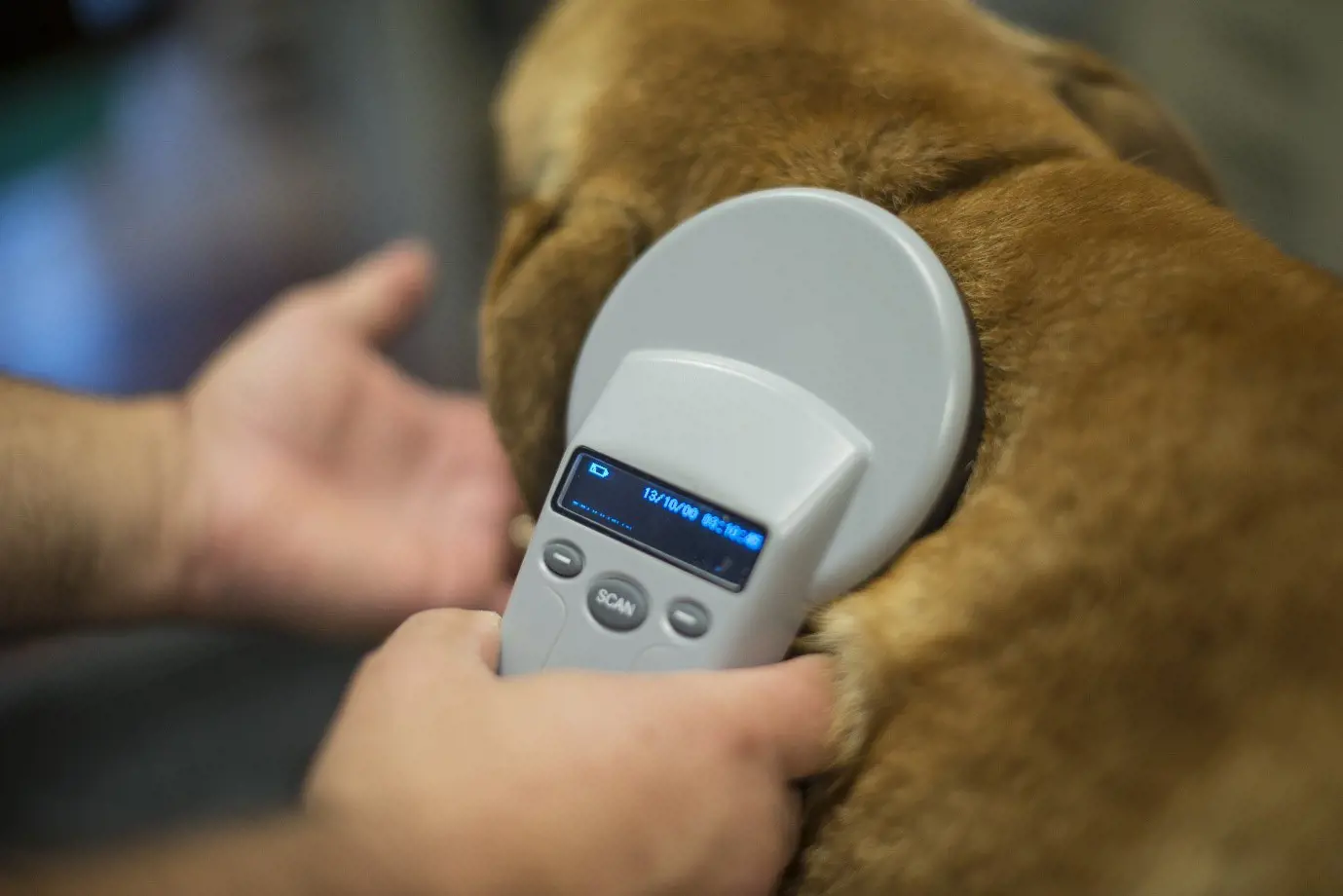The ultimate guide to gingivitis in cats and dogs
13th January, 2023
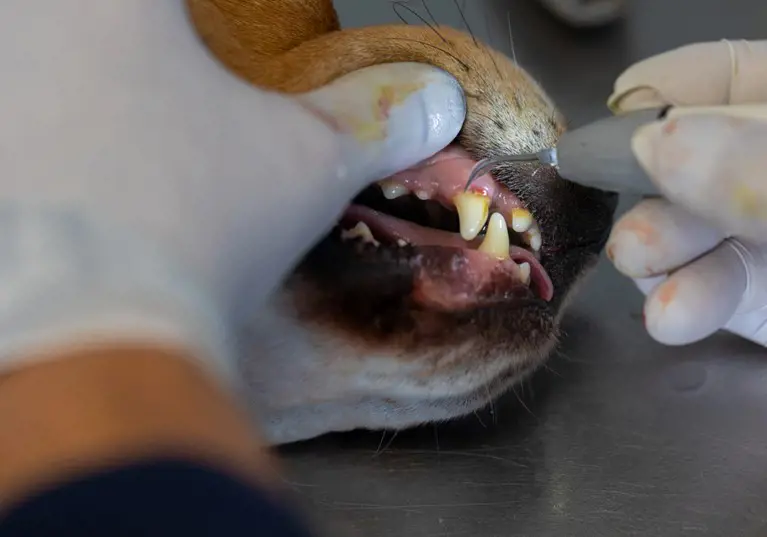
Does your pet’s breath smell? Are they going off their food? They might have gingivitis! Learn the causes and symptoms and how pet insurance with dental cover can help.
Some of the most common health conditions both cats and dogs suffer from are dental diseases. Gingivitis is as prevalent in our four-legged friends as it is in humans, and it’s easily treated if you act in time.
When left to worsen, the condition can cause periodontal disease, leading to tooth loss. As a responsible and loving pet parent, that’s the last thing you want for your furry family member, so what can you do to help?
Discover the signs to look out for below and what causes them. Learn what treatment your cat or dog will need if they have the disease and how you can prevent it coming back.
If you suspect something is wrong with your beloved animal’s oral health, take them to the vet. Pet insurance with dental cover* can help you financially when your cat or dog needs emergency treatment.
What is gingivitis?
This condition is the inflammation and swelling of your pet’s gums, and it’s very common in both canines and felines.
Gingivitis occurs when plaque and tartar build up on your animal’s teeth. The gums respond by turning red, bleeding, and becoming very sensitive and painful, which could cause your four-legged friend to lose their appetite.
With time, and if left untreated, gingivitis can develop into severe periodontal disease, eventually leading to tooth loss and a lot of suffering for your beloved pet.
The disease is preventable with good oral hygiene, but many pet owners don’t give their cat or dog’s teeth enough attention until it’s too late.
The moment you spot any of the gingivitis symptoms, take them to the vet for suitable treatment. If you have pet insurance with dental cover* with Purely Pets, you can call our 24/7 vet video consultation service to ask for advice.
Is gingivitis different in cats and dogs?
No, the disease itself is the same in both animals and causes similar symptoms. You might notice your cat reacts a little differently to a dog, but gingivitis is the same in felines and canines.
What are the causes of gingivitis?
The most common reason an animal suffers from gingivitis is due to poor dental hygiene and a bad diet. Plaque also accumulates as our four-legged friends age, which is why the condition becomes even more prevalent in senior pets.
When you don’t properly care for your cat or dog’s teeth, bacteria and food particles build up in the gaps between teeth and gums, leading to irritation and inflammation.
As the bacteria multiply, they stick to teeth, forming plaque. Eventually, the plaque calcifies and turns into tartar, which pushes the teeth further away from the gums, creating even more room for bacteria to build up.
Although most cases are caused by a lack of oral care, there are a few conditions that can increase the risk:
- Juvenile-onset gingivitis – This condition is more common in cats and affects teething kittens. It’s usually mild when they’re young but can lead to more severe gingivitis as they get older.
- Damaged teeth – If your pet has cracked or chipped teeth, it’s more likely to trigger gingivitis.
- Tooth resorption – With this condition, your animal will develop lesions around their teeth, which collect bacteria and can lead to gingivitis, just like with a cavity.
- Malocclusions – Cats and dogs with misaligned or overcrowded teeth and other oral abnormalities are at higher risk of developing gingivitis.
- Gingival hyperplasia – Overgrowth of gum tissue is more prevalent in canines than felines and can lead to gingivitis.
- Eosinophilic granuloma complex – This disease leads to inflammation in and around the mouth, and your pet might develop gingivitis as a result.
Although pet insurance with dental cover* doesn’t include regular check-ups, it’s essential to budget for these as a cat or dog owner. Frequent vet visits can spot issues before they get worse.
How can I tell if my pet has gingivitis?
You know how bad gingivitis can be for your faithful companion, but how can you spot the signs?
Many pet parents don’t realise their animal is suffering until the condition is quite advanced and irreversible damage has been done. Knowing what to look for can mean the difference between a full set of gnashers or a rather gummy grin for your four-legged family member.
The following symptoms in your cat or dog could mean they have gingivitis:
- Bad breath
- Swollen gums
- A narrow, red line across the gums
- Stained teeth (plaque build-up)
- White spots on teeth (tartar build-up)
- Bleeding gums when brushing
- Gums ooze with puss when touched
- Loss of appetite
- Weight loss
- Eating messily or only on one side
- Crying when eating
- Drooling
- Tooth loss
- Receding gums
As soon as you notice any of the signs, get your animal to the vet. The longer you leave it, the larger your medical bill will be. Pet insurance with dental cover* can help pay for treatment, so make sure you protect your cat or dog throughout their lifetime.
Some animals, particularly felines, are excellent at hiding when they’re suffering or in pain, making it difficult to spot when they have gingivitis symptoms. This is why regular health and dental check-ups are vital to catch medical conditions in the early, treatable stages.
What treatment does my pet need for gingivitis?
Once your vet has diagnosed gingivitis and seen how far advanced it is, they can recommend the best way to treat your canine or feline, which could include any of the following:
- Professional teeth cleaning, which removes tartar deposits and polishes the teeth to prevent bacteria from sticking to them. Your pet will need anaesthesia for the process.
- If the condition is more severe, your veterinarian might need to remove gum tissue or even badly affected teeth.
- Your pet will likely need anti-inflammatory medicines to help with pain, like corticosteroids.
- If your animal has a bacterial infection, they will need an antibiotic.
- After the gingivitis has been treated, your vet or dental professional will recommend how you can continue oral care at home with regular teeth brushing and by using other products.
Treatment for gingivitis can be costly, especially if your pet needs gum tissue or teeth taken out. It’s important to have pet insurance with dental cover* for your cat or dog throughout every stage of their life, as you never know when they might need emergency care.
With a policy in place, you can get help with vet bills for both illness and injury, meaning your canine companion or feline friend gets care when they need it most.
How to prevent gingivitis in your cat or dog
Whether your pet has suffered from gingivitis in the past or not, you can help prevent it from having detrimental effects on their teeth and gums with proper oral hygiene and health care, including:
- Regular teeth brushing and rinsing at home.
- Water additives that help fight plaque build-up.
- Chew treats and toys that help with plaque removal.
- Frequent dental visits with the vet to check for gingivitis symptoms.
- Giving your pet specially formulated dental foods.
- Making sure your animal has a well-balanced and nutritious diet.
While pet insurance with dental cover* can help you financially in an emergency, you should speak to your vet about a pet health plan.
These plans make it easier for you to pay for routine treatments, like dental checks, by spreading the costs evenly over a year.
Will gingivitis go away on its own?
Gingivitis is very common and perfectly treatable when you take your pet to the vet in time. Without proper oral hygiene and treatment, the condition will not go away.
Instead, gingivitis will worsen until it develops into periodontitis and your animal’s teeth start to fall out.
Is gingivitis fatal?
In the early stages, you can easily treat the condition. As it progresses, it turns into periodontal disease and can spread to other parts of the body and organs.
Your loyal pet can suffer from a number of serious health conditions, including cardiovascular disease, as a result of gingivitis. It’s crucial to take your pet for regular check-ups and identify the issue before it becomes more serious and even fatal.
How to clean your dog’s teeth
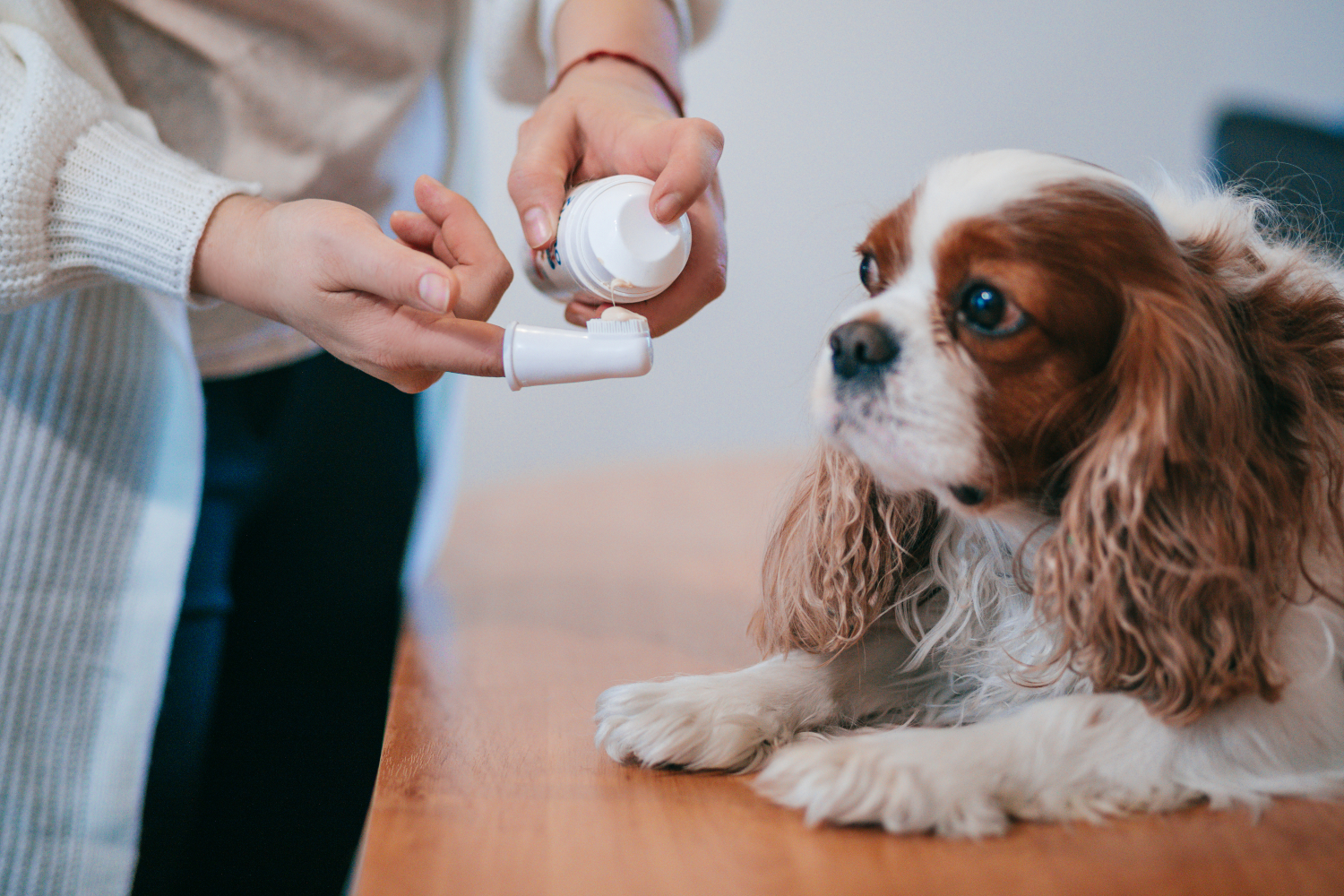
You’re well aware of the serious health concerns that can arise when you don’t take good care of your dog’s teeth, but how can you make sure they stay pearly white and in great condition? With regular brushing.
The thought of poking around in your canine’s mouth might seem a bit daunting, but after a few days of brushing, both you and your dog will feel comfortable and get into a routine.
It’s important to start from as young as possible – if you have a senior pooch, it might take longer to get them used to brushing, but it is doable.
What you’ll need:
- Specially formulated enzymatic dog toothpaste (never use the human kind!)
- Soft toothbrush from the vet
When you’ve got the right toothpaste and brush, it’s time to get started:
- Add a small amount of toothpaste to your pup’s favourite food and mix it in. This gives it a chance to get used to the taste.
- Once they happily eat their food mixed with toothpaste on a daily basis, pop a blob on your finger and let them lick it.
- When they feel comfortable, you can start to put your finger with toothpaste inside their mouth and gently rub it across their gums.
- After a few more days, it’s time to try with the brush. Add a small amount of toothpaste and let them lick it, like they did with your finger.
- When your dog feels comfortable, you can then progress with the toothbrush inside their mouth and start brushing the teeth. Use circular motions, taking particular care to clean the gum line. Include plenty of breaks for your pet to lick the toothbrush if they want.
It’s important to remember that this can take a few weeks to perfect, and if your hound seems uncomfortable at any point, you should stop and try again the next day.
If you have any questions about teeth brushing in dogs or are having trouble, you can call our 24/7 vet video service if you have pet insurance with dental cover* with Purely Pets.
How to clean your cat’s teeth
If you’ve got a feline friend at home, you’ll need to care for their teeth just as well as you would a dog’s or your own. Although the thought of getting near sharp teeth can make you nervous, most cats take well to teeth brushing.
What you’ll need:
- A suitable cat toothbrush from your vet
- A specially formulated feline toothpaste
Next, to reduce the chances of you claiming on your pet insurance with dental cover*, follow these steps to get your cat into a teeth brushing routine:
- Put a small dab of toothpaste on your finger and let your feline lick it. If they are reluctant, dab a tiny bit on their nose, which they will usually lick off.
- Spend a few days practising holding its head in the best position to brush. It’s better to have your pet’s back towards you to avoid intimidating them.
- Once your cat has got used to the toothpaste and you’ve mastered holding it in the right position, you can add a small dab of toothpaste to the end of a cotton bud. Rub it across their teeth and gums in a circular motion, starting at the back.
- It might take a while for your feline to get used to the last step, but when it does, you can introduce the toothbrush. Start with 10 seconds brushing on each side but eventually make your way up to 30-45 seconds. Always stop if your pet becomes uncomfortable.
Don’t be surprised if your cat’s gums bleed a little the first few times you use the brush. This is completely normal and will eventually stop when the gums get healthier after regular brushing.
If you’re finding it difficult to clean your feline’s teeth, you can call our vet video service or your veterinarian directly. They might recommend bringing your pet in for a demonstration.
Unfortunately, some cats never tolerate teeth brushing, so you should use other ways in addition to brief brushing to keep their gnashers in top condition.
International Cat Care recommends cat dental chews or mixing toothpaste in with their food if they tolerate the taste.
What colour is a healthy cat or dog’s gums?
When your pet has excellent oral health, the gums should look powdery pink. If your canine or feline has a gum disease, then the gums can turn a variety of colours, including:
- Bright red
- Pale white
- Blue
- Black
Take your animal to the vet as soon as you notice their gums aren’t the powdery pink shade they should be.
What other dental diseases are common in cats and dogs?
The Kennel Club notes gum disease as the most common health problem in dogs, and Cats Protection says oral conditions are just as prevalent in felines.
Unfortunately, gingivitis isn’t the only medical concern you have to worry about in your beloved pet’s mouth. A number of oral health issues can cause similar symptoms like bad breath, pain, and a loss of appetite.
With pet insurance with dental cover in place to protect your cat or dog, you can get them emergency care when they need it most without the worry of a huge vet bill.
We take a look at the most common dental issues in canines and felines below.
Periodontitis
When gingivitis is left to progress and goes untreated, it can lead to periodontitis, a severe gum infection.
The disease attacks soft tissue and destroys the bone supporting your pet’s teeth, eventually causing tooth loss and possibly other health complications, including:
- Painful abscesses
- Exposure of roots
- Heart disease
- Diabetes
- Respiratory disease
Benign oral tumours
This condition is more prevalent in canines. The tumours are commonly called epulis and are non-cancerous. As your dog ages, it’s at higher risk of these masses growing on its gums.
Deciduous teeth complications
When a cat or dog retains some of its baby teeth, it can lead to a variety of oral health conditions, including gingivitis. Smaller dog breeds and cats are more prone to deciduous teeth.
Fractured teeth and oral trauma
Damage to teeth and trauma to the mouth are common in both cats and dogs. Fractures can happen if your pet is hit by a car or other object or chews on something hard, breaking their tooth in the process.
Ulcerative stomatitis
Felines are more likely to suffer from this painful inflammatory condition, which can cause a huge amount of soreness throughout their mouth.
Unfortunately, it’s challenging to treat and the best way for your cat to find relief is by removing all the affected teeth, bone, and tissue.
Tooth resorption
This is another common feline oral issue and refers to their body breaking down and absorbing the tooth’s structure. Over time, the whole tooth will almost disappear, and your vet will need to remove the tooth and its root.
Look for pet insurance with dental cover included
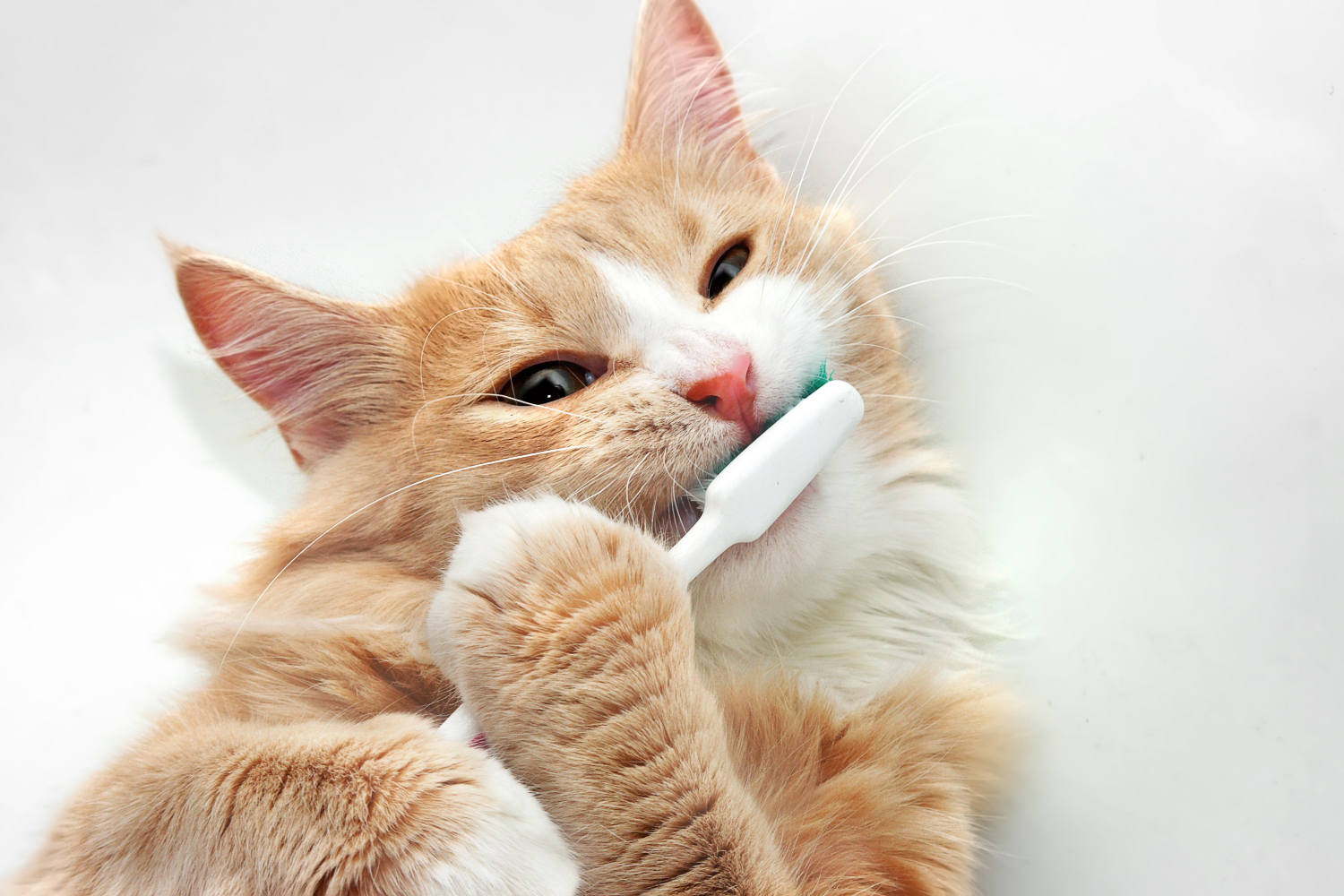
The list of oral health concerns in cats and dogs is long, and it’s sad to see your loyal four-legged family member in so much pain and suffering.
The best way you can reward your furry friend’s companionship over the years is with lifetime pet insurance with dental cover*. A comprehensive policy means you can get your animal the emergency care it needs to get back to its old self again.
If you're interested in finding out more about how to take care of your beloved companions, we have advice for how to help your dog in season, caring for your dog with stitches, what to do if you find a deceased cat, and much more!
When you choose Purely Pets, you can enjoy a number of benefits:
- 24/7 vet video consultation service
- 15 levels of lifetime cover
- Lifetime cover of up to £15,000
- Easy online policy management
- No upper age joining limit
Do you want to protect your beloved cat or dog with award-winning pet insurance? Contact the Purely Pets team today.
*Dental is only covered for accidents in the first year and illness is only covered once the policy has been live for 12 months
Helpful Pages
Recent Posts
Pet Insurance Quote
- 98% claims paid *
- Claims paid directly to vets
- 24/7 vet video consultations
- Interest free monthly payments



